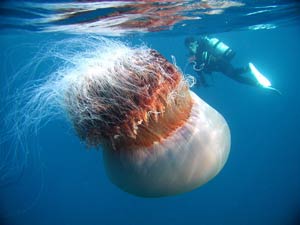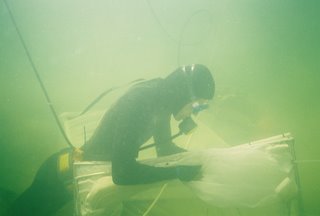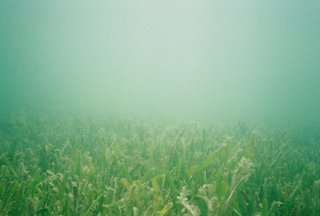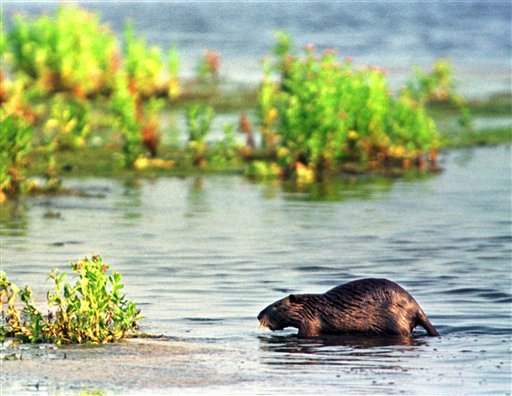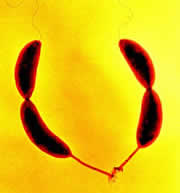
By Juliet Eilperin
Washington Post Staff Writer
Thursday, April 6, 2006; A27
Scientists doing climate research for the federal government say the Bush administration has made it hard for them to speak forthrightly to the public about global warming. The result, the researchers say, is a danger that Americans are not getting the full story on how the climate is changing.
Employees and contractors working for the National Oceanic and Atmospheric Administration, along with a U.S. Geological Survey scientist working at an NOAA lab, said in interviews that over the past year administration officials have chastised them for speaking on policy questions; removed references to global warming from their reports, news releases and conference Web sites; investigated news leaks; and sometimes urged them to stop speaking to the media altogether. Their accounts indicate that the ideological battle over climate-change research, which first came to light at NASA, is being fought in other federal science agencies as well.
These scientists -- working nationwide in research centers in such places as Princeton, N.J., and Boulder, Colo. -- say they are required to clear all media requests with administration officials, something they did not have to do until the summer of 2004. Before then, point climate researchers -- unlike staff members in the Justice or State departments, which have long-standing policies restricting access to reporters -- were relatively free to discuss their findings without strict agency oversight.
"There has been a change in how we're expected to interact with the press," said Pieter Tans, who measures greenhouse gases linked to global warming and has worked at NOAA's Earth System Research Laboratory in Boulder for two decades. He added that although he often "ignores the rules" the administration has instituted, when it comes to his colleagues, "some people feel intimidated -- I see that."
Christopher Milly, a hydrologist at the U.S. Geological Survey, said he had problems twice while drafting news releases on scientific papers describing how climate change would affect the nation's water supply.
Once in 2002, Milly said, Interior officials declined to issue a news release on grounds that it would cause "great problems with the department." In November 2005, they agreed to issue a release on a different climate-related paper, Milly said, but "purged key words from the releases, including 'global warming,' 'warming climate' and 'climate change.' "
Administration officials said they are following long-standing policies that were not enforced in the past. Kent Laborde, a NOAA public affairs officer who flew to Boulder last month to monitor an interview Tans did with a film crew from the BBC, said he was helping facilitate meetings between scientists and journalists.
"We've always had the policy, it just hasn't been enforced," Laborde said. "It's important that the leadership knows something is coming out in the media, because it has a huge impact. The leadership needs to know the tenor or the tone of what we expect to be printed or broadcast."
Several times, however, agency officials have tried to alter what these scientists tell the media. When Tans was helping to organize the Seventh International Carbon Dioxide Conference near Boulder last fall, his lab director told him participants could not use the term "climate change" in conference paper's titles and abstracts. Tans and others disregarded that advice.
None of the scientists said political appointees had influenced their research on climate change or disciplined them for questioning the administration. Indeed, several researchers have received bigger budgets in recent years because President Bush has focused on studying global warming rather than curbing greenhouse gases. NOAA's budget for climate research and services is now $250 million, up from $241 million in 2004.
The assertion that climate scientists are being censored first surfaced in January when James Hansen, who directs NASA's Goddard Institute for Space Studies, told the New York Times and The Washington Post that the administration sought to muzzle him after he gave a lecture in December calling for cuts in emissions of carbon dioxide and other greenhouse gases. (NASA Administrator Michael D. Griffin issued new rules recently that make clear that its scientists are free to talk to members of the media about their scientific findings and to express personal interpretations of those findings.
Two weeks later, Hansen suggested to an audience at the New School University in New York that his counterparts at NOAA were experiencing even more severe censorship. "It seems more like Nazi Germany or the Soviet Union than the United States," he told the crowd.
NOAA Administrator Conrad C. Lautenbacher Jr. responded by sending an agency-wide e-mail that said he is "a strong believer in open, peer-reviewed science as well as the right and duty of scientists to seek the truth and to provide the best scientific advice possible."
"I encourage our scientists to speak freely and openly," he added. "We ask only that you specify when you are communicating personal views and when you are characterizing your work as part of your specific contribution to NOAA's mission."
NOAA scientists, however, cite repeated instances in which the administration played down the threat of climate change in their documents and news releases. Although Bush and his top advisers have said that Earth is warming and human activity has contributed to this, they have questioned some predictions and caution that mandatory limits on carbon dioxide could damage the nation's economy.
In 2002, NOAA agreed to draft a report with Australian researchers aimed at helping reef managers deal with widespread coral bleaching that stems from higher sea temperatures. A March 2004 draft report had several references to global warming, including "Mass bleaching . . . affects reefs at regional to global scales, and has incontrovertibly linked to increases in sea temperature associated with global change."
A later version, dated July 2005, drops those references and several others mentioning climate change.
NOAA has yet to release the report on coral bleaching. James R. Mahoney, assistant secretary of commerce for oceans and atmosphere, said he decided in late 2004 to delay the report because "its scientific basis was so inadequate." Now that it is revised, he said, he is waiting for the Australian Great Barrier Reef Marine Park Authority to approve it. "I just did not think it was ready for prime time," Mahoney said. "It was not just about climate change -- there were a lot of things."
On other occasions, Mahoney and other NOAA officials have told researchers not to give their opinions on policy matters. Konrad Steffen directs the Cooperative Institute for Research in Environmental Sciences at the University of Colorado at Boulder, a joint NOAA-university institute with a $40 million annual budget. Steffen studies the Greenland ice sheet, and when his work was cited last spring in a major international report on climate change in the Arctic, he and another NOAA lab director from Alaska received a call from Mahoney in which he told them not to give reporters their opinions on global warming.
Steffen said that he told him that although Mahoney has considerable leverage as "the person in command for all research money in NOAA . . . I was not backing down."
Mahoney said he had "no recollection" of the conversation, which took place in a conference call. "It's virtually inconceivable that I would have called him about this," Mahoney said, though he added: "For those who are government employees, our position is they should not typically render a policy view."
Tans, whose interviews with the BBC crew were monitored by Laborde, said Laborde has not tried to interfere with the interviews. But Tans said he did not understand why he now needs an official "minder" from Washington to observe his discussions with the media. "It used to be we could say, 'Okay, you're welcome to come in, let's talk,' " he said. "There was never anything of having to ask permission of anybody."
The need for clearance from Washington, several NOAA scientists said, amounts to a "pocket veto" allowing administration officials to block interviews by not giving permission in time for journalists' deadlines.
Ronald Stouffer, a climate research scientist at NOAA's Geophysical Fluid Dynamics Laboratory in Princeton, estimated his media requests have dropped in half because it took so long to get clearance to talk from NOAA headquarters. Thomas Delworth, one of Stouffer's colleagues, said the policy means Americans have only "a partial sense" of what government scientists have learned about climate change.
"American taxpayers are paying the bill, and they have a right to know what we're doing," he said.




